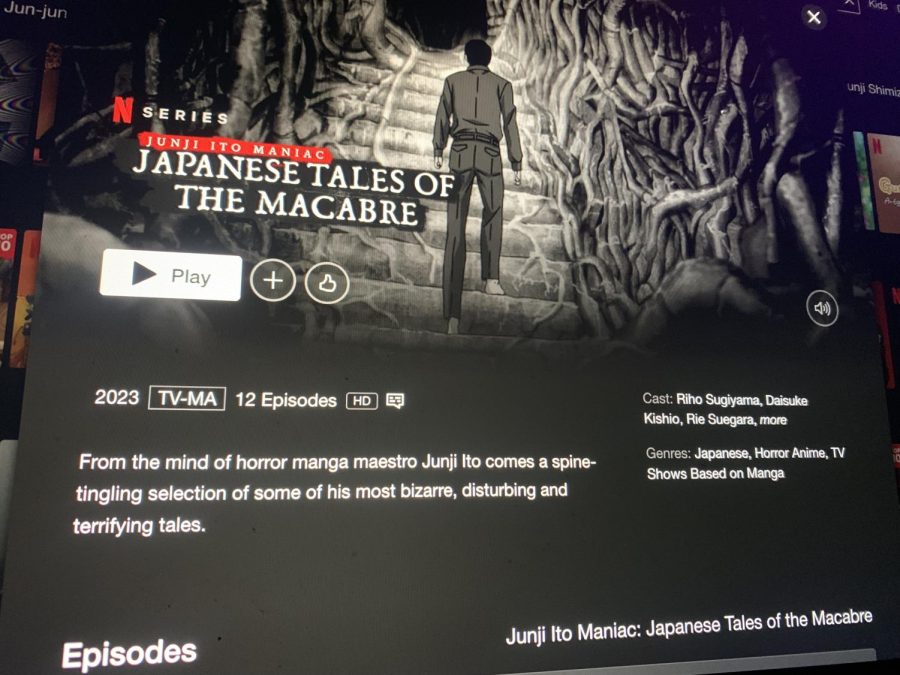Another bad Netflix anime turns horror to comedy
The Netflix pop-up of “Junji Ito Maniac: Japanese Tales of the Macabre” with a description of the show.
February 21, 2023
Japanese From balloons of disembodied heads to a girl who just won’t die and a mom who tears through layers of her daughter’s skin, welcome to the world of “Junji Ito Maniac: Japanese Tales of the Macabre.”
This series, which dropped on Netflix on Jan. 19, features 12 episodes packed with the short stories of Junji Ito, a horror mangaka (which is someone who creates manga) whose work has gained a dedicated following – and for a good reason.
Ito is known for the detail in his style; he is able to craft grotesque images of body horror that make readers cringe at the panels they are looking at. Ito makes the human body contort in ways that should not be possible outside of the imagination, giving his works an unsettling quality. Fans of his work adore how terrifying and oftentimes gross it can get, seeing it as the appeal.
With Ito possessing a collection of highly loved and appraised horror one-shots, it seemed like “Junji Ito Maniac: Japanese Tales of the Macabre” would be able to easily bring these scary stories to life.
However, the only thing terrifying about Netflix’s adaptation is how bad it is.
Within the 12 episodes, the series adapts 20 of Ito’s short stories.
The arrangement of these stories seemed to be the result of a bad game of eenie meenie miney moe.
This stuck out the most in episode two, where two stories are featured in one episode. First is the story of people who keep disappearing in a strange cave. The mood is suspenseful and creepy and the anticipation pays off by the end. The second adapted story is the opposite.
The second story is about an ice cream bus (yes: bus, not truck) that kids go onto every Saturday to take a trip around town. The man working the bus, the change in how the main child acts, and the design of the ice cream bus definitely signals that there is something sinister going on. But by the end, it’s more comical than horrifying.
The kids ate so much ice cream, they turned into it.
These absurdities carry throughout even serious episodes, like in “Hanging Balloon.” The story was horrifying; there are face balloons that are identical to every character and the balloon’s only goal is to hang the person whose face it shares. However, the CGI done to create these floating heads is impossible to get over. It looks silly, taking all the distinguishable qualities of Ito’s work and deflating them into nothing.
That being said, there are some stories that were enjoyable, such as “Headless Statue” and “Layers of Terror,” to name a couple. These adaptations still contained some of the spine-shivering qualities Ito is known for.
This series would be fine to watch with friends or if a watcher doesn’t have previous knowledge of Ito’s works. It offers something new every episode and doesn’t require the watcher to have seen other episodes to understand what is going on.
On its own, it isn’t too bad. But as an adaptation, it fails to live up to Ito’s drawn work.
Following in the same steps as past attempts to animate Ito’s world of horror, this anime will be used as another example to “just read the manga.”



